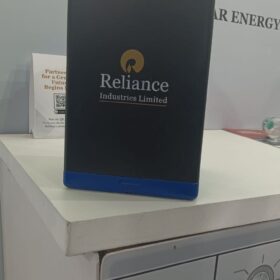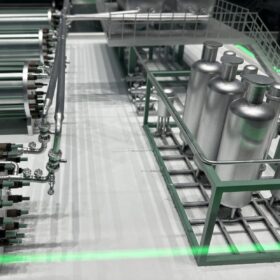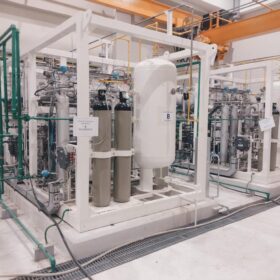From pv magazine 04/2022
The concept of MLPE on the rooftop always leaves people asking reliability questions: weather, heat, exposure, and so on. Tell us about Enphase’s quality assurance process – where you’re at, and how things have progressed.
Sure. It really starts with the inverter itself. When you think about quality, you’ve got to think about many aspects. It’s the system qualities, how you work with your customers, and the quality of the microinverter itself, and it really begins with the right architecture. Distributed architecture always wins in the long run, and they win for cost performance and reliability reasons.
But why did microinverters become popular? They were tried in the late ‘90s and then were given up on. We realized the problem was the approach. We said: We’re going to design it as a digital device. Secondly, we’re going to build our own ASICs [application-specific integrated circuits]. And the entire operation of the device was going to be controlled in software – one of the key elements for high quality and reliability.
And do you have examples of how this evolved?
I’ll give you some example metrics. When we first started, our inverters were 175W, efficiency around 94.5%. And I think at the time, our first product had 540 components in it.
Fast forward to today, the inverter is phenomenally more sophisticated. It’s bidirectional, four quadrant, and our highest power inverter produces 366W, more than double the power at 97% average efficiency, but it has close to 300 components. So a remarkable change in about 10 years, right? And it was all because of the architecture: a digital topology, all controlled by custom silicon, and silicon is extremely reliable. And that allows us to reduce the parts count down and drive our reliability.
And what about your testing regimes?
We do extensive reliability testing. We took what was a module test, an IEC 61215-style test, and we modified the heck out of it. We test the microinverter under full operation, full power operation, running extended IEC 61215 testing, from minus 40 C to plus 85 C, or 85 C and 85% relative humidity.
We also do enhanced testing to test for water ingress. For example, we take our devices and we simulate one meter by putting it in a pressure cooker, filling it with water, putting a dye in it, and we run that inverter from -40 C to plus 85 C, full power, for 21 days underwater. Not only are we testing how the inverter operates, but it’s also the cabling system which can’t be a point of ingress either.
And what about the component parts themselves? Again, they will be up on the roof.
We do extensive testing on materials: plastics, connectors, the cables, and so on. We put them in a xenon chamber and then we subject them to accelerated life testing under very high UV light. And remember we offer a full energy system, which means we do storage, protection devices, and now we have got EV chargers as well. So all of those devices have their own quality reliability profiles that they have to meet, each having a different set of test criteria. We are very scientific about defining what the operational profile needs to be.
That’s necessary, but not sufficient. You still have to think about the reliability of the whole system. So that was the reason why we have embedded communications technology. So today, the devices send information to our cloud. We track closely how the devices are doing. If we discover a problem, invariably we can solve it in software, because it’s such a software heavy device.
Can you give me an example of a sample fault that you can actually fix with software?
Say there’s a particular type of grid perturbation. The inverter may not gracefully ride through that. Once we discover that the inverter has an abnormality, what we can do is simulate that, and then have the inverter detect that abnormality in the grid and then protect itself.
Grid behavior is an unbounded problem. So, if there is something that we have not seen before, we can capture what that perturbation is, and then tune and train the inverter to recognize that and protect itself. The grid is a pretty harsh environment, and we have built an expansive library of grid perturbations. So, we can take that new grid waveform we see, and add it to our library. And then we subject the next design to an even more enhanced set of grid perturbations to see how our inverters are behaving.
In terms of the data capture you’re talking about, are you looking at using more sensors in the future, or extrapolating more from the current sensors you’re using?
Just to give you some metrics, we have 1.9 million systems worldwide, and the vast majority of those are sending data back to us on how the inverters are doing. They’re sending data on how the grid is doing, they’re sending data on how the modules are doing. And now over the last seven quarters we’re getting data from our battery systems as well.
We also get data on homeowners’ consumption, which is incredibly valuable, and it really helps us train our systems to provide the best optimization for the homeowner. That may be self-consumption bill optimization, or carbon footprint optimization, and so on.
And how do you see the collection of data evolving for Enphase?
The amount of information we collect will keep going up. We have built out a really extensive operational platform, with our gateway as well as our cloud, and that is capable of ingesting massive amounts of data.
1.9 million homes, sending data to us down to an individual microinverter, every five minutes, is a lot. We collect many terabytes of data. It’s about interacting with the system, and the system that we deploy is moving from solar to an energy system. That includes solar, storage, EVs, load management, grid management, and so on. We use that data to further the reliability of our products and to provide better service to our customers.
This content is protected by copyright and may not be reused. If you want to cooperate with us and would like to reuse some of our content, please contact: editors@pv-magazine.com.









By submitting this form you agree to pv magazine using your data for the purposes of publishing your comment.
Your personal data will only be disclosed or otherwise transmitted to third parties for the purposes of spam filtering or if this is necessary for technical maintenance of the website. Any other transfer to third parties will not take place unless this is justified on the basis of applicable data protection regulations or if pv magazine is legally obliged to do so.
You may revoke this consent at any time with effect for the future, in which case your personal data will be deleted immediately. Otherwise, your data will be deleted if pv magazine has processed your request or the purpose of data storage is fulfilled.
Further information on data privacy can be found in our Data Protection Policy.